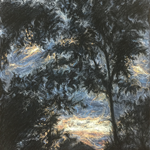
Shell Gateway
Acrylic Painting
Acrylic paint changed the art world when it was invented in 1928

Shell Gateway
Acrylic Painting
Acrylic paint changed the art world when it was invented in 1928
You’ll have to come out of your shell and dive into your deep sea acrylic adventures by cracking open some new techniques and exploring the colorful world of paint. Just like a hermit crab swapping shells, you’ll be trying on different shading techniques and experimenting with mixing colors.
You’ll start by mastering smooth gradients with paint retarder, creating pointillistic color transitions that rival the intricate patterns on a seashell, and crafting textured fades that mimic the rugged beauty of a weathered conch shell.
Shell Shockingly, there’s more! Like a pearl hidden within an oyster’s shell, we’ll uncover the secrets of various paintbrushes—each one with its unique purpose and potential. From the fine precision of a detail brush to the bold strokes of a fan brush, we’ll learn how to wield these tools with finesse and care.
So, grab your brushes and let’s shell-ebrate the beginning of our acrylic journey!

Acrylic is cherished for its bright colors and quick drying. Because of the speed it dries though, you’ll have to work extra fast.

Before we immerse ourselves in the vibrant world of acrylic painting, we must prepare our canvas with gesso. Applying gesso to the canvas is akin to the natural process of shell strengthening through calcification. Just as shells become fortified over time with layers of calcium carbonate, the application of gesso creates a sturdy foundation for our artistic endeavors. Like the gradual strengthening of a shell, each layer of gesso adds resilience and durability to the canvas, ensuring that our artwork stands the test of time.
“Once the gesso dries, you’ll venture into the meticulous process of gridding and transferring your drawing to the canvas. Just as growth lines on a shell represent the developmental stages of the organism, the grid lines on a canvas symbolize the structured approach to transferring and scaling our artistic vision. Precision and attention to detail are paramount as you carefully measure and resize your original image and sketch. Similar to how a shell provides protection and structure to its inhabitant, the gridded canvas serves as the scaffold for your painting to materialize and protect you from frustration and errors in your painting process while creating your guidelines to stay within.
Just as a scallop flutters around, clapping its shell, you’ll bounce around from grid block to grid block on the canvas. Within each block, much like the clam slowly inching along with its byssal foot, you’ll then meticulously sketch in the details of your planned project, ensuring precision and accuracy. This deliberate approach mirrors the movements of these shell creatures as they navigate their surroundings, allowing you to methodically bring your artistic plan to life, one grid block at a time.”

There are many ways to prepare your canvas. We used rabbit skin glue when I was attending college in Florence Italy
As you prepare to embark on your first acrylic painting, you take along with you your newfound skills like old barnacles clinging to the hull of a seaworthy ship, accumulated over time and experience. Just as a ship sets sail with its hull adorned with barnacles, you venture into the colorful world of acrylics, equipped with techniques honed through practice and dedication.
You’ll start by filling in areas evenly with their color. With each brushstroke, aim for precision along the edges and also focusing on consistency, ensuring that every inch of your canvas is covered with care and attention to detail.
Next, refine your skills in outlining accurately, capturing the intricate shapes and contours of your subject like a seasoned navigator charting a course through treacherous reef-filled waters. Just as the edges of a shell define its unique form, your precise outlines will give shape and structure to your artwork, guiding the viewer’s eye and adding depth to your composition.
Finally, you will apply your shading techniques, adding depth and dimension to your painting. Through careful blending and layering of colors, you’ll create shadows and highlights that breathe life into your artwork, evoking the beauty and complexity of the natural world.
With practice and patience, you’ll uncover the hidden depths of your creativity and emerge with artworks that shimmer and shine like the treasures of the sea.

Every brush has a specific purpose for its creation so that the artist can make their work easier and more accurately. Master Paskewity often said, “You can eat cereal using a fork, but its a lot easier using a spoon.”
Oil pastels are the best of both worlds. Oil pastels can be applied as a dry medium and then manipulated with a paintbrush immediately by adding turpentine. The artist is free to go back and forth between these two related materials.

Soft pastels are a magnificent material that takes a subtle hand and a moderate hand. Pastels are often loved for their soft colors and fluffy appearance. They are fantastic to get your hands messy with since they are typically in a rectangular stick form. Degas was well known for his use of soft pastels and most people will never forget his ballerina imagery that he executed using this material.

Soft pastels are the cotton candy of art materials. Hey wait! Don’t eat them! Thats a metaphor kids!
© Copyright 2014 by Oam Studios.com - Made With In Pleasanton by Omar Morineau+